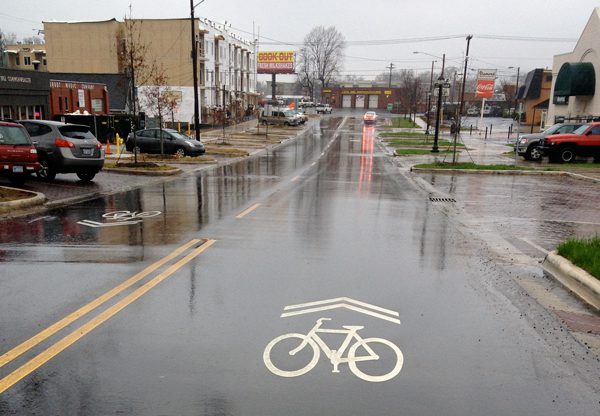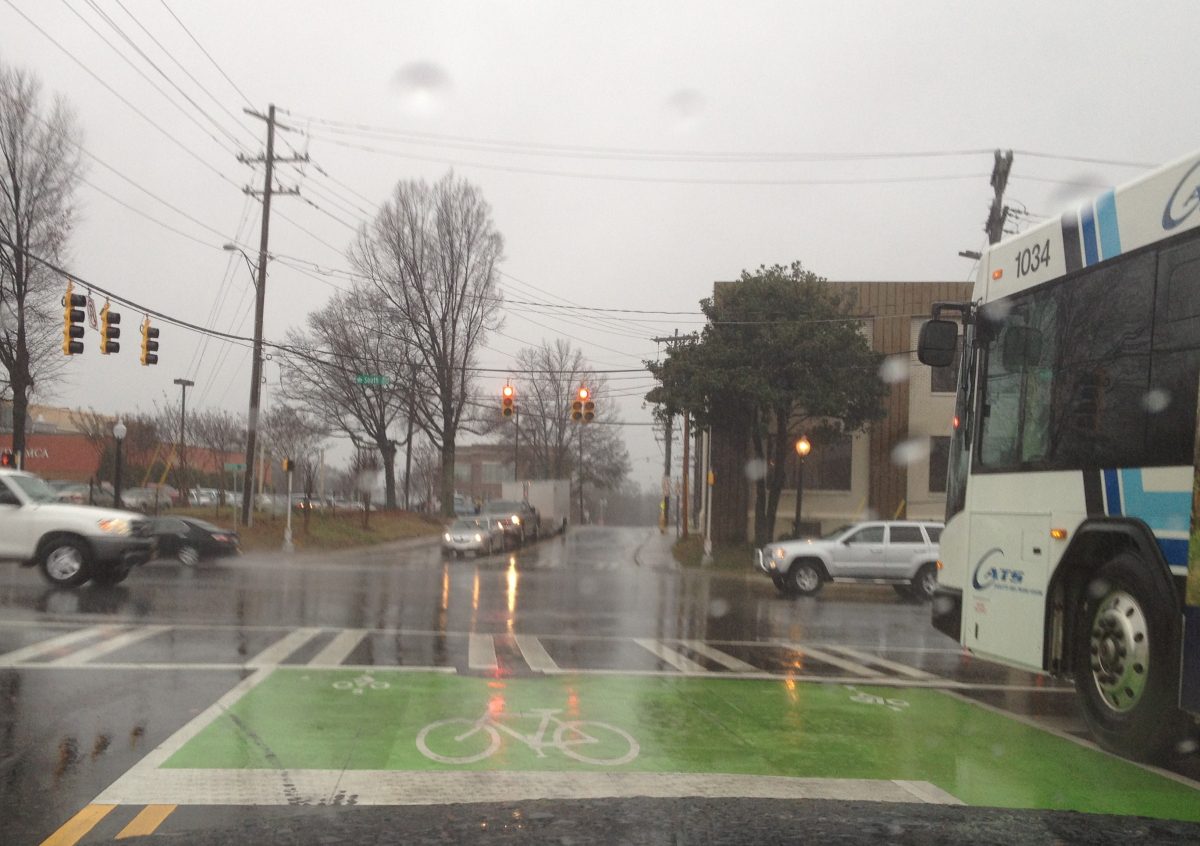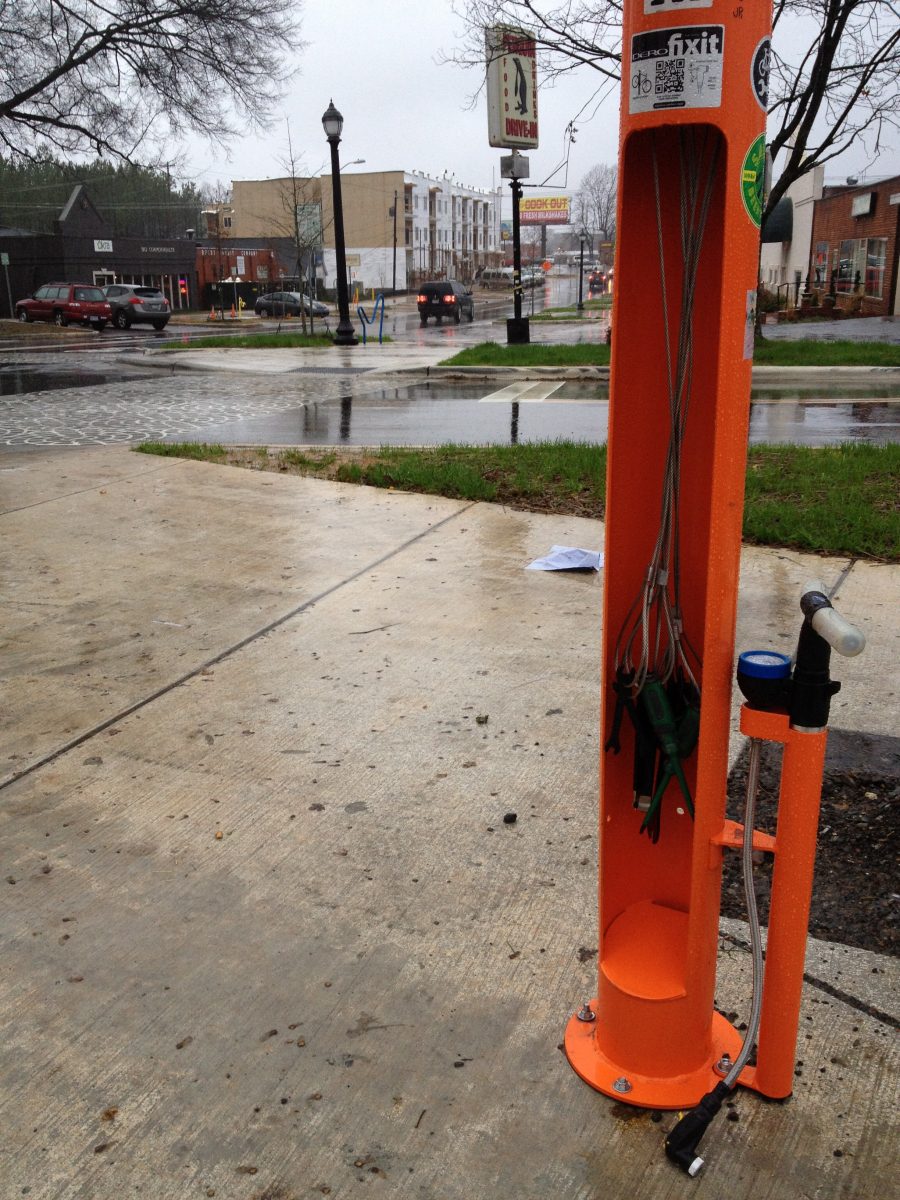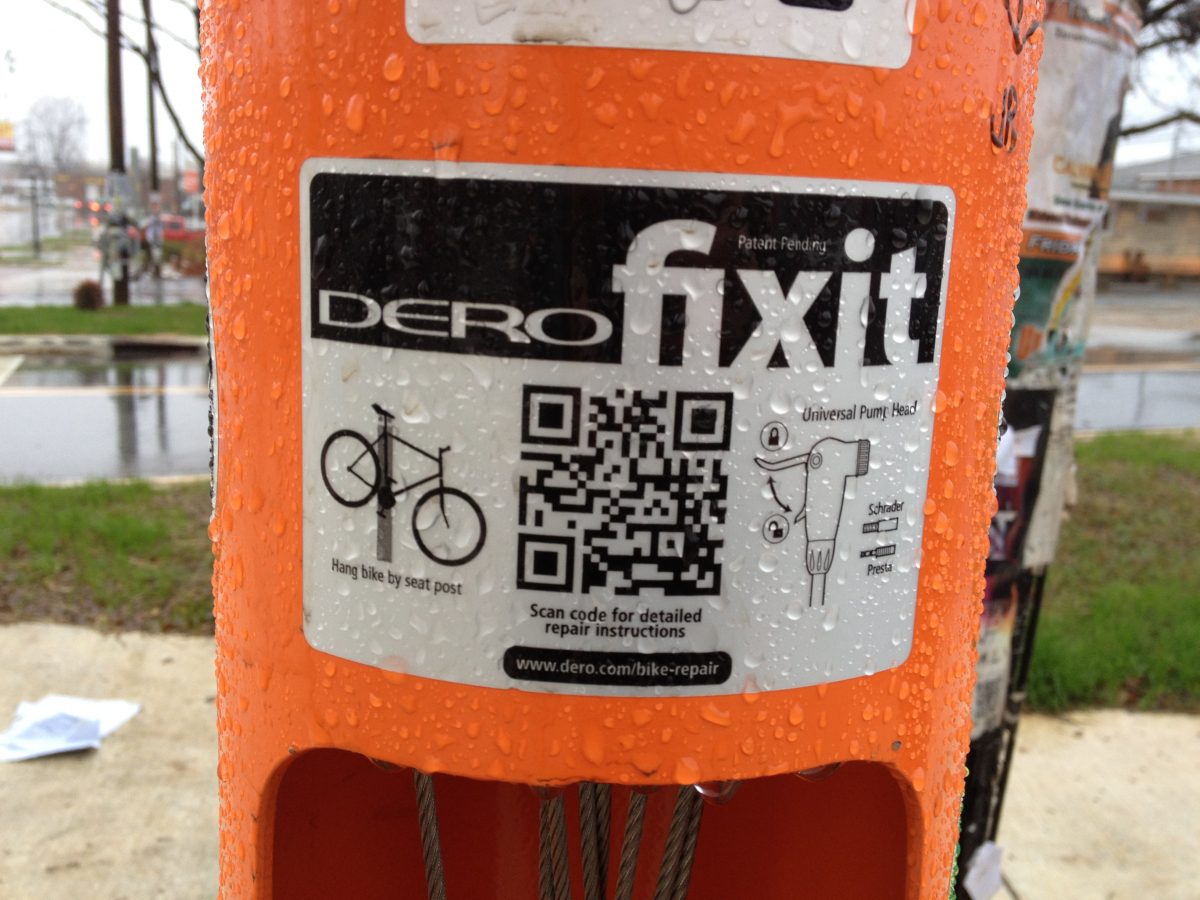Charlotte quietly improves streets for cyclists

While cities such as Memphis have gained national attention for proclaiming a bicycle-friendly goal, Charlotte has been quietly taking a number of steps to improve its own streets for cyclists. Its bicycle sharing program, B-cycle, the first in North Carolina, has gotten a lot of publicity, but several other small scale improvements have begun, designed to increase cyclists’ comfort and safety:
Buffered bike lane: The lane, at Remount Road, is designed to give cyclists a little more separation from the moving traffic lane. This street happened to have extra space to allow the buffered bike lane. There aren’t many opportunities with two extra feet of pavement to work with, says Ken Tippette, Bicycle Program Manager for the Charlotte Department of Transportation.
Pavement detectors at signaled intersections: Five bicycle-sized sensors are sprinkled around Charlotte, most often on signed bike routes. The sensors, like vehicle sensors, create a magnetic field and are triggered when an electrical conducting material enters the field. Contrary to popular belief, the material does not need to be steel or magnetic, only electrical conducting, such as aluminum rims on a bicycle. A cyclist emblem on the pavement marks the detector location. These help traffic flow and decrease red-light running incidences. They are on Dunn Avenue at Monroe Road, Marvin Road at Wendover Road, Aylesford and McAlway roads at Randolph Road, Hillside Avenue at Park Road, and Carson Boulevard and Lexington Avenue at South Boulevard (the bike box is here).
More bike lanes: Charlotte has 72 miles of bike lanes, as counted by the centerline of the road. In other words, bike lanes going in both directions on one street are counted as one, not double, as some cities count them. So when comparing cities, take care; other cities could be measuring differently. For comparison, in 2003 Charlotte had only 1 mile of bike lanes.
Bike box: This is a box, painted on the pavement, that tells cars to stop before they enter the “bike box.” The box puts cyclists out of the way of right-turning vehicles, reducing potential movement conflicts. Charlotte has one, at the Carson and South Boulevard intersection. Tippette says that at this moment, no additional bike boxes are planned, but that doesn’t rule out future considerations.

Green lanes: Charlotte has three small sections of green: one on Fourth Street as it reaches College Street, one at the end of 10th as it approaches uptown, where frequent right-turning vehicles on their way to I-277 cross the bike lane, and at the bike box on Carson at South Boulevard. See this article written about Charlotte’s green lanes.
More signed bike routes: These routes carve paths through the city to destinations, taking advantage of quieter neighborhood streets and existing bike lanes. There are 45 miles of signed bicycle routes, with more miles planned, adding extensions and connectivity. The idea is to create a connected network.
Bike repair/ maintenance stand on Commonwealth: This maintenance stand came from the Plaza Midwood Neighborhood Association. The group applied for a Neighborhood Energy Challenge Grant from Power2 Charlotte and used part of the money for the maintenance stand and new colorful bike racks dotting the area. More such kiosks may be arriving in the future. The nonprofit group Trips for Kids Charlotte is talking with individual retailers and the Mecklenburg County Park and Recreation Department about installing more, possibly along some of the county’s greenway trails, group member Dick Winters said.


Back-in angle parking on Commonwealth Avenue: Unfamiliar to most is the back-in angled parking recently installed where Commonwealth nears Pecan Avenue. It’s safer for bicycles because drivers have a clear view of the street when they’re pulling out. Back-in parking is also good for parents with small children. When the door opens, kids bolt toward the sidewalk, not the street. It’s also good for shoppers returning to their cars with multiple bags, as the trunk is next to the sidewalk. These improvements are a part of the Commonwealth Avenue / The Plaza Business Corridor Project.
Opening of the Little Sugar Creek Greenway urban section: Although not specifically for bicyclists, it provides a new, scenic way to bicycle from the Metropolitan complex north to Seventh Street.
South Tryon Street’s I-277 bridge and street conversion project reallocated space on the street to better accommodate pedestrians and cyclists. Instead of four traffic lanes and narrow sidewalks pressed against the railing edge, this entrance to uptown is more attractive and comfortable for cyclists and pedestrians. Three traffic lanes are flanked by bike lanes and more generous sidewalks. It’s now considered a more “complete street” – a street designed for safe access to everyone, for all ages and abilities.
Each of the above measures is helping stitch together Charlotte’s cycling infrastructure, aimed at bringing more cyclists out to the streets, increasing visibility for cyclists and those traveling next to them, raising awareness and providing more options for getting around the city.